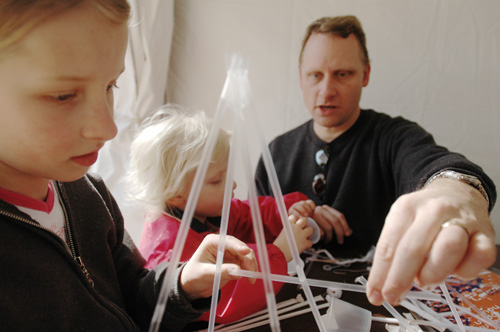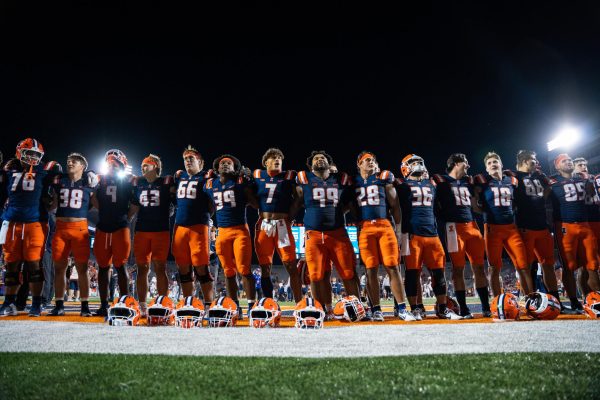Robots race in engineering contest

Scott Schaumann, right, and his daughters Adrienne, 8, and Dana, 3, build straw towers at the Engineering Open House on Saturday. The family said they were trying to make the tower as tall and strong as possible. ME Online
Mar 12, 2007
Last updated on May 12, 2016 at 08:45 a.m.
Twenty-two teams. Six universities. Six attempts. Two days. All to achieve one thing: champion of the robotics design team.
At the 20th annual AMD Jerry Sanders Creative Design Competition, held during the University’s Engineering Open House on Friday and Saturday, students displayed their projects that some had been working on for nearly a year.
“I just joined the team this semester. (The team has) been preparing since last semester, since last year’s competition actually,” said Steven Mockus, senior in Engineering from University of Illinois at Chicago.
Mockus was one of 22 members of the “EDT-Thor” team from Chicago that made it into the semifinals and ended up placing third overall.
Get The Daily Illini in your inbox!
Team “IEEE” from the University took first place in the competition, which involved making a robot that could grab hula hoops and Frisbees and place them in color coordinated bins.
The rounds last 10 minutes each and two robots compete at a time in the semifinals, said Mitul Patel, senior in Engineering and head of external publicity for EOH.
The teams have to design the robots themselves and follow all the rules that the Open House committee sets for the competition each year.
The competition is funded by AMD, a global provider of processing solutions for computers.
Mike Bentz, IEEE’s captain and senior in Engineering, said he was just happy their robot didn’t blow up this year.
“Last year we blew up the morning of the competition,” he said. “We didn’t compete the first day, and then the second day we jerry-rigged something that could at least drive.”
Going into the championship round, Bentz and IEEE team member Dan Sigety, sophomore in Engineering, were both pleased with the team’s performance at this year’s competition.
“It’s great to see that everything we tried is working out,” said Sigety. “Once you are actually here, it’s interesting to see what works and what doesn’t and make changes on the fly.”
Mockus said last year EDT-Thor took first place and this year they were having some difficulties with communication between the robot and the controller.
“There’s many things that can go wrong, especially working with electronics parts,” Mockus said.
Also making it into the top four were teams E-ville from the University and EDT-Ares from Chicago, taking second and fourth place, respectively.





